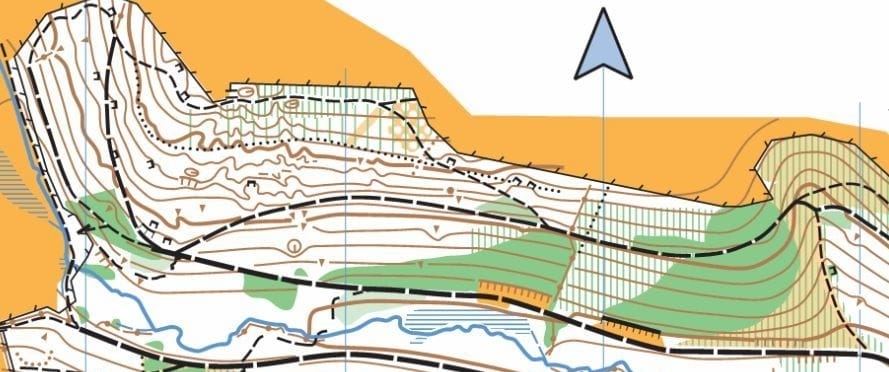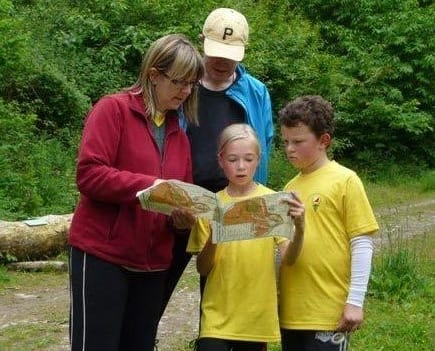General Event Information
What is Orienteering?
Some information about things you'll see and do at an event. For a guide specific to JOGs, please see here.
Attending an event
Select your event from the events list. Note that many orienteering events are in obscure rural areas so plan your journey to the event carefully. You can arrive at any time within the start time range, but to avoid being under time pressure, novices are advised to arrive early.
On arrival novices will be able to get lots of help and advice from those at registration.
The registration routine used will depend on the system used to record your passage around the course.
Electronic punching - you carry an electronic punch which you use to record your visit to each control point on the course. This system has almost completely taken over from...
Manual punching - You carry a control card and a pin punch is provided at each control point to enable you to punch your control card and thereby record your passage round the course. (Each punch has a different pattern of pins!!) We use this for most junior events.
GPS punching - You carry your smartphone and the GPS decides if you are close enough to a control.


Irrespective of the type of punching used the basic routine is -
Registering
Decide which course you want to run, there are details at Registration and sometimes on the web event page.
Fill out your registration slip.
Then show your completed slip to the registration team and pay for your entry.
Hand in your registration slip to the computer people and collect your electronic punch or 'dibber'.
The Start
You are now free to start your 'run' anytime between courses opening and closing. Only at bigger events will you be given a designated time to start.
Go to the start. The start official will ask you to clear then check your dibber using the electronic boxes provided. This wipes any old data on the chip.
The action!
Run your course, looking for your next kite each time and recording your arrival at each control point by dibbing electronically (or punching your control card if you're at a lo-tech event).
Finished?
Hand in your Control Card or download the information on your electronic punch. With electronic punching the record of your run is immediately available and the course results are usually available before you leave the event. With Control cards overall results will take a day or two to work out. Final results are usually available on the net within a couple of days.

Safety
When you have visited all the controls you visit download to have your electronic dibber "read".
Even if you don’t find all the controls it is important that you report to download so that we (and your friends) know that you have finished and are not lying injured in the forest. If you lose your dibber you must tell the people at the finish / download.
Course standards
The table below gives an idea of the relative difficulty of the colours. Precise guidelines can be found in BOF Rules. Although the age of children has been used as a guide for some of the easier courses even the adult beginners would benefit from going round an easier course first just to get the idea of map scale, symbols etc.
Explanation of courses (by Berkshire OC)
Video explanation (Irish Orienteering Association)
| Colour | Technical difficulty | Physical difficulty | Remarks |
| White | 1 | 1 | All on paths, direction of next control always indicated by flag. Suitable for young children of 7 to 8 who should be accompanied. |
| Yellow | 2 | 2 | Routes along obvious line features e.g. earth banks, fences as well as paths. Decision points introduced |
| Orange | 3 | 3 | Controls on features a little way off paths or on line features. Route choice introduced. Adult beginners shouldn't attempt anything harder. |
| Red | 3 | 3 to 4 | Not often provided. Basically a long Orange. |
| Light Green | 4 | 3 | Transitional course for improving skills. Navigation skills required, interpretation of contours |
| Green | 5 | 3 | For those with good navigational skills but with limited energy or running speed |
| Blue | 5 | 4 | Longer than Green and shorter than Brown! |
| Brown/ Black | 5 | 5 | For very fit and competent navigators who are usually 16 plus. |
A good orienteer in good physical condition will travel at somewhere between 6 and 10 minutes per kilometer depending on the terrain.
